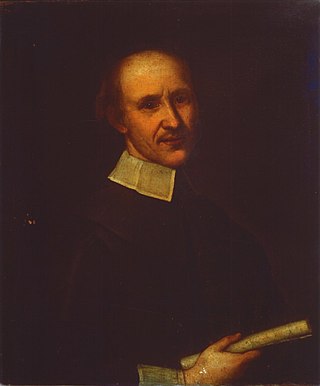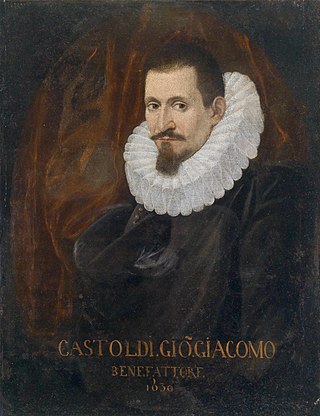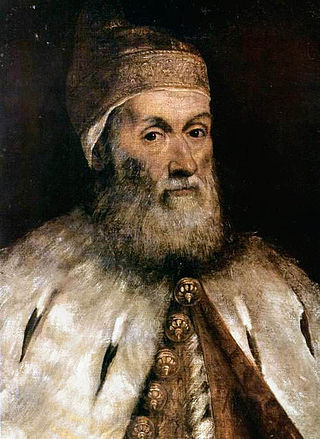Related Research Articles

Isabella Clara Eugenia, sometimes referred to as Clara Isabella Eugenia, was sovereign of the Spanish Netherlands in the Low Countries and the north of modern France with her husband, Archduke Albert VII of Austria.

Giovanni Legrenzi was an Italian composer of opera, vocal and instrumental music, and organist, of the Baroque era. He was one of the most prominent composers in Venice in the late 17th century, and extremely influential in the development of late Baroque idioms across northern Italy.

Giovanni Giacomo Gastoldi was an Italian composer of the late Renaissance and early Baroque periods. He is known for his 1591 publication of balletti for five voices.
The year 1669 in music involved some significant events.
The year 1677 in music involved some significant events.
Giovanni Maria Bononcini was an Italian violinist and composer, the father of a musical dynasty.
Giovanni Girolamo Kapsperger was an Austrian-Italian virtuoso performer and composer of the early Baroque period. A prolific and highly original composer, Kapsberger is chiefly remembered today for his lute and theorbo (chitarrone) music, which was seminal in the development of these as solo instruments.
The year 1626 in music involved some significant events.
The year 1621 in music involved some significant events.
The year 1662 in music involved some significant events.
Giovanni Battista Vitali was an Italian composer and violone player.
Giovanni Priuli was a Venetian composer and organist of the late Renaissance and early Baroque periods. A late member of the Venetian School, and a contemporary of Claudio Monteverdi, he was a prominent musician in Venice in the first decade of the 17th century, departing after the death of his associate Giovanni Gabrieli and ending his career at the Habsburg court in Austria. His music straddled the dividing-line between Renaissance and Baroque idioms.
Il secondo libro di toccate is a collection of keyboard music by Girolamo Frescobaldi, first published in 1627. A work of immense historical importance, it includes the first known chaconne and passacaglia, as well as the earliest set of variations on an original theme. Il secondo libro di toccate is widely regarded as a high point in Frescobaldi's oeuvre.
Count Pirro Capacelli Albergati was an Italian aristocrat, and amateur composer.

"Gelobt sei Gott im höchsten Thron" is a hymn for Easter in 20 stanzas in German by Michael Weiße, widely known with a later melody by Melchior Vulpius. Shortened, it is part of current Protestant and Catholic German hymnals.

The Paris quartets is a collective designation for two sets of Chamber music compositions, each consisting of six works for flute, violin, viola da gamba, and continuo, by Georg Philipp Telemann, first published in 1730 and 1738, respectively. Telemann called his two collections Quadri and Nouveaux Quatuors. The collective designation "Paris quartets" was only first bestowed upon them in the second half of the twentieth century by the editors of the Telemann Musikalische Werke, because of their association with Telemann's celebrity visit to Paris in 1737–38. They bear the numbers 43:D1, 43:D3, 43:e1, 43:e4, 43:G1, 43:G4, 43:g1, 43:A1, 43:A3, 43:a2, 43:h1, 43:h2 in the TWV.

The House of Priuli was a prominent aristocratic family in the Republic of Venice; they entered the Venetian nobility early in the 14th century. Their members include:
Pietro degli Antonii was an Italian composer.
References
- ↑ Selfridge-Field, Eleanor. "Priuli, Marieta Morosina". Archived from the original on 14 November 2010. Retrieved 30 November 2010.
- ↑ "Marieta Morosina Priuli" . Retrieved 30 November 2010.
- ↑ Sadie, Julie Anne; Samuel, Rhian (1994). The Norton/Grove dictionary of women composers. ISBN 9780393034875 . Retrieved 30 November 2010.
- ↑ Bowers, Jane and Judith Tick (1986). Women Making Music: The Western Art Tradition, 1150–1950. University of Illinois, Urbana, p. 137.